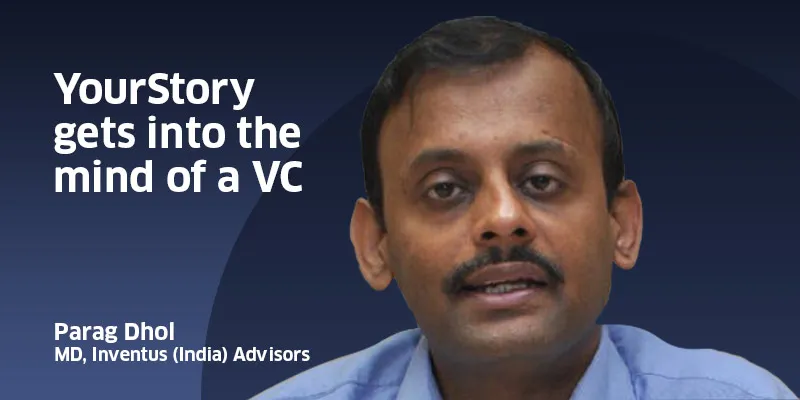What drew Inventus to redBus, Cbazaar and Savaari: The Parag Dhol interview
Flush with a second fund of US $106 million, and plans to place bigger bets on Indian startups, Inventus (India) Advisors MD Parag Dhol sat down for a conversation with YourStory to share insights on the business models they like, and how they expect the startup ecosystem to evolve in India.
Inventus focuses on early stage startups in Internet, mobile and software services. Their first fund invested US $52 million in 18 companies, including the online ticketing company redBus which was acquired by Naspers last year. In the first part of the interview, Parag explains that the redBus model for using technology to solve everyday problems is a recurring theme for Inventus in India. In particular, what appeals to Parag is the aggregator model of e-commerce – where a firm does not produce or keep things itself, but collects information on goods and services from competing sources, to provide a platform for retailers while enabling consumers to easily compare prices and specs.

An institutional venture investor in India most of his 18-year career, Parag has invested in 27 companies across India, resulting in 14 exits, including three IPOs to date. At Inventus, he is a Board Director at redBus, Savaari, Vizury, Funds India and eTechies. Here are excerpts from YourStory's interview with Parag Dhol:
Is there a pattern to your investments in Indian startups?
We like the aggregation model as a theme. redBus, for example. There are 1200 bus operators. If you, as a customer, want to go to Chennai, you can go to Sharma Travels at Madiwala bus station at 8 a.m. But on redBus, if you are staying in north Bangalore, there may be some other bus, which might pick you up from Hebbal. So that choice and convenience across operators is what redBus gives.
Do some of your other companies have this model too?
A lot of our companies have this model. Another example is Savaari Car Rentals. Most people confuse it with the Ola and Meru kind of model. But Savaari is not point to point like Ola and Meru. On the other hand, if I am going to Pune and have to attend four meetings in various parts of the city, Savaari offers 4 hour/8 hour – half day/full day packages. Again, it's an aggregator model with 150 operators in 60 cities across India.
Cbazaar too basically works on an aggregator model. They have 350 suppliers from all across India for a choice of mid-priced, ethnic Indian garments, a choice you couldn't get on say Myntra – because Myntra tends to focus on branded stuff.
Was this their model from the beginning?
They started off as Chennai Bazaar, a horizontal. Actually, it was a gifting site. Then they realized that the gifts being given, typically around Diwali and other festivals, were mainly garments. Since they were shipping so many garments in any case, they decided to focus on garments.
These are all customer-facing businesses, using information technology for aggregation. What about pure tech companies?
Amazingly, in India, when we talk about technology companies, it is more about application of technology than pure tech companies. That being said, we have a company here called eDreams Edusoft. The hypothesis there is, essentially, when a 5th standard teacher is teaching maths to the class, she is teaching to the median of the class. The student who is smart is bored to death and the student at the bottom can't keep up. The ideal solution to this problem is one-on-one teaching, which is economically not feasible. So through adaptive software, can you solve this problem? Multiple step problems like trignometry, for example. You falter at third step, I falter at fifth, your understanding is different from mine, so you take a different path of learning. This involves a whole lot of artificial intelligence, machine learning and so on. That is a really high tech company.
Do they work across different educational institutions?
Yes, their solution is kind of an amalgamation of content and technology – those are kind of married. But maths is maths everywhere. So at the end of the day, you modify the content slightly for a CBSE curriculum, ICSE curriculum and so on. But it can work across boards. It can even go international.
Thank you, Parag, for making this so easy to follow for us. From aggregators like redBus, Savaari and Cbazaar to the hi-tech eDreams, you showed us what lies at the core of their success. We will surely hear more such success stories in days to come.
In the second part of this interview, Parag tells us how he sees the startup ecosystem evolving in India, and what needs to happen for exits and acquisitions to pick up and give a boost to entrepreneurship. Don't miss it.
Do you have a view on the Inventus way? Let Parag Dhol know in a comment below.







